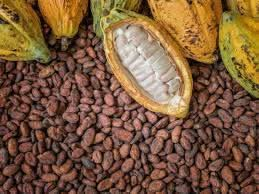The Ghana Voice,
Accra, Ghana

Editorial: Cocoa Price Hike — Promise Kept or Promise Broken?
The Ghana Voice 05-08-2025The Government’s announcement of a 62.58% increase in the cocoa producer price — from US$3,100 to US$5,040 per tonne — for the 2025/26 crop season has ignited both praise and criticism. Supporters argue that President John Mahama has honoured his pledge to pay cocoa farmers 70% of the Free-On-Board (FOB) value.
The Finance Minister, chair of the Producer Price Review Committee, insists the new price exactly reflects 70% of a gross FOB value of US$7,200 per tonne. At a projected average exchange rate of GHS10.25 to the US dollar, this equals GHS51,660 per tonne or GHS3,228.75 per 64-kilogram bag.
But the opposition disagrees, accusing the government of paying farmers far below the GHS6,000 per bag they claim was promised during the campaign. They also cite historical data showing that while this year’s cedi price is the highest nominally, its percentage increase over last year is among the smallest in decades — just 4.15%, compared to triple-digit jumps in recent years.
Cocoa Price Trends — Recent Seasons (per 64kg bag)
| Season | Price (GHS) | % Change |
|---|---|---|
| 2021/2022 | 660 | +28.15% |
| 2022/2023 | 800 | +21.21% |
| 2023/2024 | 1,380 | +72.5% |
| 2024/2025 | 3,100 | +124.6% |
| 2025/2026 | 3,228.75 | +4.15% |
Historical Cocoa Prices — 2010/11 to 2025/26 (per 64kg bag)
| Year/Season | Govt in Power | Price (GHS) |
|---|---|---|
| 2010/11 | NDC | 75.00 |
| 2011/12 | NDC | 70.00 |
| 2012/13 | NDC | 62.00 |
| 2013/14 | NDC | 62.00 |
| 2014/15 | NDC | 62.00 |
| 2015/16 | NDC | 62.00 |
| 2016/17 | NDC/NPP | 475.00 |
| 2017/18 | NPP | 475.00 |
| 2018/19 | NPP | 475.00 |
| 2019/20 | NPP | 515.00 |
| 2020/21 | NPP | 660.00 |
| 2021/22 | NPP | 660.00 |
| 2022/23 | NPP | 800.00 |
| 2023/24 (Oct) | NPP | 1,308.00 |
| 2023/24 (Apr) | NPP | 2,070.00 |
| 2024/25 (Sept) | NPP | 3,000.00 |
| 2025/26 | NPP | 3,100.00 |
For instance, if the world market price per tonne is US$8,220, at GHS10.20 to the dollar, that equals GHS83,844 — 70% of which is GHS58,690 to the farmer. At GHS16, the same US$8,220 converts to GHS131,520, with the farmer’s share rising to GHS92,064.
When the cedi appreciates, payouts in cedi terms fall, even if the dollar price is high. When the cedi weakens, payouts rise — but inflation quickly eats into the benefit.
By the Numbers — What Farmers Earn per Bag (64kg, 70% FOB)
| World Price (US$/tonne) | Exchange Rate (GHS:$1) | Cedi Value per tonne | Farmer’s Share (70%) | Per Bag (64kg) |
|---|---|---|---|---|
| $8,220 | 10.20 | GHS 83,844 | GHS 58,690 | GHS 3,668 |
| $8,220 | 16.00 | GHS 131,520 | GHS 92,064 | GHS 5,771 |
| $7,200 (Govt baseline) | 10.25 | GHS 73,800 | GHS 51,660 | GHS 3,228 |
As the new cocoa season opens on August 7, The Ghana Voice urges both sides of the political divide to focus less on political scoring and more on creating a pricing regime that shields farmers from currency shocks and inflation. Cocoa is not just an export commodity — it is the lifeblood of rural Ghana. The question is not only whether promises are kept, but whether farmers truly prosper.
